Armstrong Whitworth Whitley
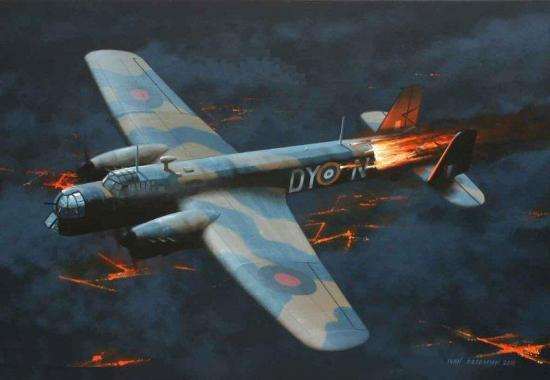
Armstrong Whitworth Whitley MkV P5005 - P/O Leonard Cheshire (DSO) © Ivan Berryman
Allemagne, 12/13 novembre 1940 - Germany, 12th/13th November 1940.
Développement - Development
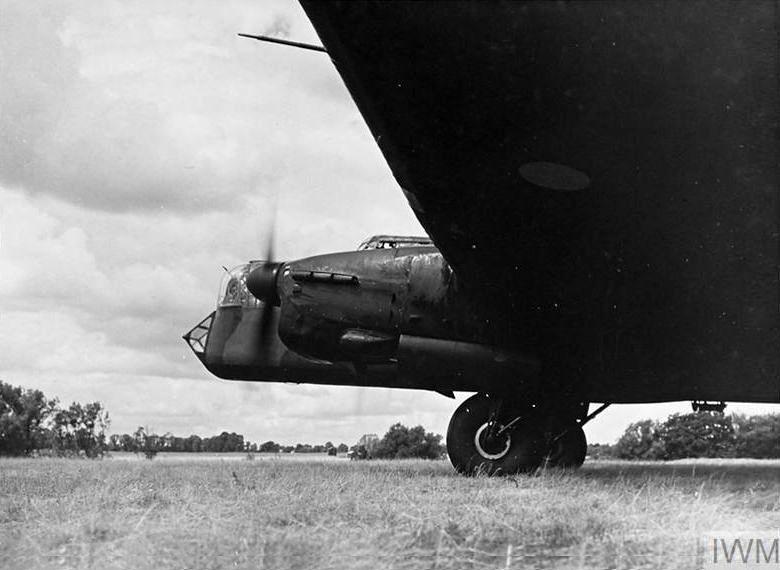
Armstrong Whitworth Whitley - Photo : © IWM CH 679
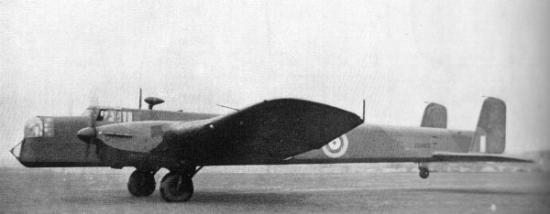
Armstrong Whitworth Whitley - Photo : domaine public - Public domain (UK Government)
En juillet 1934, l'Air Ministry lança un nouveau cahier des charges pour un bombardier bimoteur de nuit pouvant également réaliser des missions de transport. Cette spécification, la B.3/34, insistait sur la facilité de production par un nombre de pièces réduit. John Lloyd, ingénieur en chef de Armstrong Whitworth Aircraft, et son équipe développèrent en un temps record le A.W. 38 auquel ils donnèrent le nom de Whitley, un quartier du Sud de Coventry, ville de la principale usine de l'entreprise. L'A.W. 38 fut développé à partir du projet A.W. 23, qui échoua au profit du Bristol Bombay dans la compétition pour la spécification C.26/31. Le Whitley fut le premier avion de la R.A.F. conçu avec un fuselage à structure (semi)monocoque.
In July 1934, the Air Ministry issued a new specification for a twin-engined night bomber which could also conduct transport missions. This specification, B.3/34, insisted on the ease of production by a reduced number of parts. John Lloyd, Chief Designer of Armstrong Whitworth Aircraft, and his team designed very rapidly the A.W. 38 which they named Whitley, a quarter of Southern Coventry, city of the main facility of the company. The A.W. 38 was a developement of the project A.W. 23, which lost out to the Bristol Bombay in the competition for the specification C.26/31. The Whitley was the first aircraft of the R.A.F. designed with a (semi)monocoque fuselage.

Armstrong Whitworth Whitley - "Flight" Magazine, 26/05/1938 - © www.flightglobal.com
Armstrong Whitworth n'étant pas familier avec les volets sur les gros avions, l'A.W. 38 fut initialement conçu sans volet mais avec une incidence de voilure de 8,5° pour compenser et ainsi faciliter les décollages et atterrissages ; cette configuration donnait à l'avion une impression de piqué permanent (nez pointé vers le bas). Construit en 3 sections, le fuselage était équipé de tourelles Armstrong-Whitworth à commande manuelle à l'avant et à l'arrière. Les soutes à bombes étaient fermées par des portes en bois et métal qui s'ouvraient par le poids des bombes lors des largages et qui se refermaient par des sandows : elles valurent au Whitley le surnom de "Flying Barn Door" (Porte d'étable volante).
Because Armstrong Whitworth was not familiar with flaps on a large heavy monoplane, the A.W. 38 was initially designed without sflaps but with a wing angle of incidence of 8.5 ° to compensate and so facilitate takeoffs and landings ; This configuration gave an impression of permanent "nose down" attitude to the aircraft. Built in 3 parts, the fuselage was fitted with front and rear Armstrong-Whitworth turrets manually operated. Bomb bays were closed by wooden and metal doors which opened by the weight of bombs when dropped and which were kept closed by bungee cords : this gave to the Whitley the nickname of "Flying Barn Door".

Armstrong Whitworth Whitley -
Un des deux prototypes - One of the two prototypes
Photo : domaine public - Public domain (UK Government)
Le premier prototype Whitley Mk I (K4586), était équipé de moteurs 14 cylindres en double étoile Armstrong Sideley Tiger IX (795 CH - 593 kW) avec hélices tripales de Havilland à pas variable. Piloté par Alan Campbell-Orde, chef pilote chez Armstrong-Whitworth, il effectua son premier vol le 17 mars 1936 à Baginton. Le second prototype (K4587 - spécification B.21/35) fut équipé de moteurs Tiger XI plus puissants puis remis au Royal Aircraft Establishment pour des essais : il vola pour la première fois le 24 février 1937, piloté par Charles Turner Hughes.
The first prototype Whitley Mk I (K4586) was fitted with 14 cylinders engines Armstrong Sideley Tiger IX (795 HP - 593 kW) with three bladed variable pitch propeller de Havilland. Piloted by Alan Campbell-Orde, Armstrong Whitworth's Chief Test Pilot, it made its first flight on March 17th, 1936 at Baginton. The second prototype (K4587 - specification B.21/35) was powered by more powerful Tiger XI engines and then sent to the Royal Aircraft Establishment for tests. It flew for the first time on 24th February, 1937, flown by Charles Turner Hughes.

Armstrong Sideley Tiger © Rickard, J (22 November 2009), Armstrong Siddeley Tiger radial engine ,
http://www.historyofwar.org/Pictures/pictures_armstrong_siddeley_tiger.html
 Un hangar rempli de Whitleys dont un est en cours de révision.
Un hangar rempli de Whitleys dont un est en cours de révision.
Photo : © IWM CH 689
Les versions - Variants
Whitley Mk I

Armstrong Whitworth Whitley Mk I K7183 (c/n A.W.1171)
© Courtoisie - Courtesy Jacques Trempe Collection - www.1000aircraftphotos.com
80 Whitley Mk I furent commandés "sur la planche à dessin" dès août 1935 (Commande n° 421118/35) ; le 1er exemplaire (K7183) fut terminé en mars 1937. Les premiers modèles (du 2ème au 13ème exemplaire de série) furent livrés au Squadron 10 de Dishforth (Yorkshire) pour remplacer les Handley Page Heyford. Puis le Sqn 78 est équipé de 12 Mk I et enfin le Sqn 58 de juillet à novembre 1937 (dont le 34ème et dernier modèle de la série).
80 Whitley Mk Is were ordered " off the drawing board " in August, 1935 (Order # 421118/35) ; the 1st unit (K7183) was finished in March, 1937. The first units (from 2nd to 13th series models) were delivered to the 10 Squadron at Dishforth (Yorkshire) to replace Handley Page Heyford. Then the 78 Sqn received 12 Mk I units and lastly the 58 Sqn from July to November, 1937 (including the 34th and last unit of the series).

Armstrong Whitworth Whitley Mk I K7207 (?)
© Rickard, J (22 November 2009), Armstrong Whitworth Whitley Mk.I
http://www.historyofwar.org/Pictures/pictures_whitley_mk_I,html
Les Mk I pouvaient emporter 1 525 kg de bombes et étaient équipés d'une mitrailleuse Vickers de 7,69 mm dans chaque tourelle. En cours de production, le dièdre de voilure fut modifié rétroactivement sur les premiers appareils. Finalement, 34 Whitley Mk I furent fabriqués (dont 3 qui seront modifiés en prototypes de Mk III/IV) pour céder la place aux Whitley Mk II.
Mk Is could take 1 525 kg of bombs and were fitted with a 7.69 mm Vickers machine gun in each turret. During the production, the dihedral of wings was retroactively modified on the first aircrafts. Finally, 34 Whitley Mk I were manufactured (among which 3 were modified in prototypes of Mk III/IV) and followed by Whitley Mk IIs.
Whitley Mk II

Armstrong Whitworth Whitley Mk I K7209 (c/n A.W.1197)
Utilisé pour développer le Mk II - Used to develop the Mk II.
© Courtoisie - Courtesy Ron Dupas Collection - www.1000aircraftphotos.com
Le Whitley Mk I K7209 fut utilisé pour développer le Mk II. Mis en service en janvier 1938, le Whitley Mk II fut une évolution du Mk I : son moteur, l'Armstrong Siddeley Tiger VIII de 920 CH donnait au Mk II de meilleures performances. Il répondait ainsi à la spécification B 21/35. 46 exemplaires furent livrés pour solder la première commande de 80 appareils.
The Whitley Mk I K7209 was used to develop th Mk II. Entering in service in January, 1938, the Whitley Mk II was an evolution of the Mk I : its engine, the Armstrong Siddeley Tiger VIII (920 HP) confered to the Mk II better performances. It met the specification B 21/35. 46 units were delivered to complete the initial order of 80 aircrafts.

Armstrong Whitworth Whitley Mk II
En vol au dessus de la gare e triage de Coventry - Flying over Coventry railway junction .
© Courtoisie - Courtesy RAF Abingdon 10 OTU - www.rafabingdon10otu.co.uk
Le Mk II immatriculé K7217 fut gardé pour des expérimentations et le K7243 fut utilisé pour tester le moteur radial de 1200 CH Armstrong Siddeley Deerhound (1er vol le 6 janvier 1939). Les premiers modèles seront affectés au Sqn 58. Puis les Sqn 7 (Finningley) et 51 (Boscombe Down) seront équipés.
The Mk II designated K7217 was kept for tests and the K7243 was used to test the 1,200 HP radial Armstrong Siddeley Deerhound engine (1st flight on 6 January, 1939). The first units were sent to the 58 Sqn. then the 7 Sqn (Finningley) and 51 Sqn (Boscombe Down) were equipped.

Armstrong Whitworth Whitley Mk II - K7218
Photo : domaine public - Public domain (UK Government)
Whitley Mk III
En 1936, une autre commande (n° 522438/36) pour 80 bombardiers de nuit (spécification B. 20/36) est passée à Armstrong-Whitworth. Le Mk III était équipé d'une tourelle motorisée Nash & Thomson avec une Vickers de 7,69 mm à l'avant et d'une gondole rétractable, pivotant sur 360°, armée de 2 mitrailleuses Browning de 7,69 mm à l'arrière. Trop lourde, cette gondole ne fut pas utilisée en opération mais son puits fut utilisé pour le largage de parachutistes.
In 1936, another orders (# 522438/36) for 80 night bombers (specification B. 20/36) is placed to Armstrong-Whitworth. The Mk III was fitted with a motorized turret Nash & Thomson with a 7.69 mm Vickers in front and a retractable rear gondola, revolving on 360 °, armed with 2 machine guns 7.69 mm Brownings. Too heavy, this gondola was not used in operation but its well was used for the dropping of paratroopers.

Armstrong Whitworth Whitley Mk III
Source and copyright unknown
Le vitrage de l'avant du fuselage fut élargi pour faciliter le travail du bombardier. Le Mk III pouvait recevoir des bombes plus grosses. Le prototype fut développé à partir du Mk I immatriculé K7211. Les Mk III de série furent liv rés d'août 1938 à fin 1938 (dernier modèle : K9015). Mais ils étaient déjà démodés à leur entrée en service. Les premières unités équipées seront les Sqn 77 et 102.
The front glazing of the fuselage was widened to facilitate the work of the bomber. The Mk III could carry larger bombs. The prototype was developed from a Mk I registered K7211. The series Mk III were delivered from August, 1938 till the end of 1938 (last model : K9015). But they were already gone out of fashion when delivered. The first squadrons to be equipped were the 77 and 102 Sqns.

Armstrong Whitworth Whitley Mk III - 77 Squadron
Sergents pilotes et observateur, septembre 1939.
Sergeant Pilots and Observer, September, 1939.
© Courtoisie - Courtesy of 77 Squadron R.A.F. Association - 77 Sqn RAF
Whitley Mk IV

Armstrong Whitworth Whitley Mk I K7208
Prototype pour essai des moteurs Merlin de la version Mk IV
Prototype for Merlin engines tests destinated to Mk IV version
© Rickard, J (5 August 2010), Armstrong Whitworth Whitley Mk.I K7208 with Merlin engines
http://www.historyofwar.org/Pictures/pictures_whitley_K7208.html
40 Whitley IV (immatriculés K9016 à K9055) furent commandés en 1936. Plus puissant et mieux armé, le Mk IV fut développé à partir du Mk I K7208 que l'on renforça : il pouvait ainsi décoller avec une masse de 15 175 kg et franchir 3 125 km. Son nouveau moteur de 12 cylindres en V Rolls-Royce Merlin IV de 1 030 CH lui donnait une vitesse maximale de 395 km/h à 4 950 m. Le premier vol d'un Mk IV fut effectué le 5 avril 1939. Deux autres Mk I (K7209 et K7211) furent utilisés pour d'autres développements.
40 Whitley IV (registered K9016 to K9055) were ordered in 1936. More powerful and better armed, the Mk IV was developed from the Mk I K7208 which was reinforced : he was then able to take off with a weight of 15 175 kg and to fly 3 125 km. Its new 12 cylinders 1 030 HP engine Rolls-Royce Merlin IV confered it a maximal speed of 395 kph at 4 950 m. The first flight of a Mk IV was made on the 5th April, 1939. Two others Mk I (K7209 and K7211) were used for the other developments.
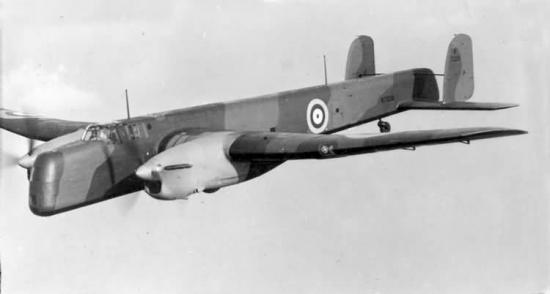
Armstrong Whitworth Whitley Mk IV K7208 (c/n A.W.1196)
© Courtoisie - Courtesy Jacques Trempe Collection - www.1000aircraftphotos.com
La tourelle arrière était une tourelle motorisée Nash & Thomson équipée de quatre mitrailleuses Browning de 7,69 mm. Un vitrage fut rajouté dans la partie inférieure avant pour améliorer la visibilité du bombardier ainsi que deux réservoirs d'ailes supplémentaires pour passer la capacité totale de carburant à 3205 l. 33 Mk IV furent achevés plus 7 modèles équipés du moteur Merlin X (1145 CH) pour donner la version IV A. Ces Mk IV A furent livrés au Sqn 78 en juillet-août 1939. Le Sqn 10 reçoit 12 des premiers Mk IV en mai 1939.
The rear turret was a motorized Nash and Thomson turret fitted with four 7.69 mm Browning machine guns. A window was added in the low part of the nose to improve the visibility of the bomber as well as two additional wing tanks to reach the total fuel capacity of 3,205 l. 33 Mk IV were manufactured plus 7 units fitted with the engine Merlin X (1 145 HP) to give the IV A version. These Mk IV A were delivered to the 78 Sqn in July-August, 1939. The 10 Sqn received 12 of the first units in May, 1939.

Armstrong Whitworth Whitley Mk IV K7208
Source inconnue - Source unknown
Whitley Mk V

Armstrong Whitworth Whitley Mk V
Source inconnue - Source unknown
En 1938, 302 bombardiers à moteurs Merlin X furent commandés (commande n° 75147/38). Ce nouveau modèle, Mk V, avait un fuselage allongé de 38 cm à l'arrière pour améliorer le champ de tir de la tourelle. L'empennage vertical fut également redessiné et un dégivrage pneumatique ajouté sur le bord d'attaque de l'aile. Seulement 5 appareils seront en unités à la déclaration de guerre.
In 1938, 302 bombers with engines Merlin X were ordered (order # 75147/38). This new model, Mk V, had a longer fuselage by 38 cm at the rear to improve the shooting angle of the turret. The vertical empennage was also redesigned and a pneumatic defrosting system added on the wing. Only 5 aircrafts were delivered when the war was declared.
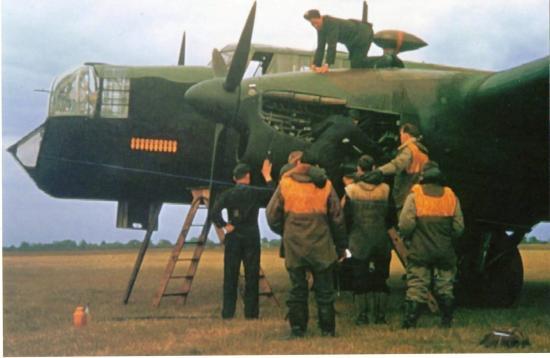
Armstrong Whitworth Whitley Mk V - Abingdon (Oxfordshire) (?)
© Courtoisie - Courtesy RAF Abingdon 10 OTU - www.rafabingdon10otu.co.uk
150 appareils supplémentaires furent commandés en 1939 (commande n° 38599/39). Puis 1 170 exemplaires supplémentaires en 1940 (commande n° 106962/40). En 1942, la production de Whitley était de 12 appareils par semaine. Au total, 1 476 Whitley Mk V seront produits.
150 additional units were ordered in 1939 (order # 38599/39). Then 1 170 additional units in 1940 (order # 106962/40). In 1942, the production of Whitleys reached 12 units a week. In total, 1 476 Whitleys Mk V were produced.

Armstrong Whitworth Whitley Mk V, Z9266 'ZA-K', no 10 Squadron, Leeming, Yorkshire.
© IWM CH 4450
Whitley Mk VI
Projet de bombardier équipé d'un moteur Pratt & Whitney en vue de pallier au manque éventuel de Merlin : ce projet ne fut pas réalisé.
Project of bomber fitted with Pratt & Whitney engine in order to face a potential lack of Merlin engines : this project was never realised.
Whitley Mk VII
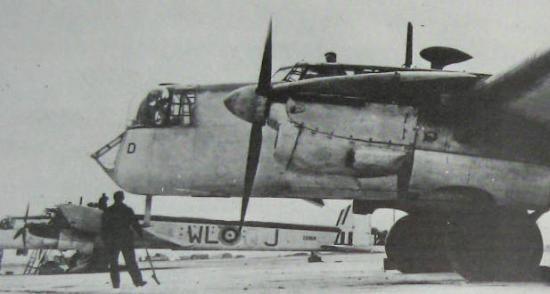
Armstrong Whitworth Whitley Mk VII - 612 Sqn
Source inconnue - Source unknown
Le Coastal Command cherchait un avion à long rayon d'action pour des reconnaissances maritimes. En 1940, le Whitley Mk V immatriculé P4949 fut modifié pour la lutte anti sous-marine et équipé d'un radar de détection de navire type A.S.V. Mk II. Les antennes du radar ralentissaient l'avion mais sa capacité de carburant plus importante (5 000 litres) lui conférait une autonomie de 3 700 km. Mis en service à l'automne 1941, il fut commandé en 146 exemplaires (avenant à la commande n° 106962/40). Quelques Mk V supplémentaires furent également mis aux standard du Mk VII.
The Coastal Command looked for a very long range aircraft for sea reconnaissance. In 1940, the Whitley Mk V designated P4949 was modified for anti-submarine combat and fitted with a A.S.V. Mk II type radar to detect ships. The antennas of the radar slowed the aircraft down but its greater fuel capacity (5 000 liters) conferred it 3 700 km of autonomy. Entering service in autumn, 1941, it was ordered in 146 units (endorsement to order # 106962/40). Some extra Mk V were modified with the Mk VII standards.

Armstrong Whitworth Whitley Mk VII
Source inconnue - Source unknown
Production

Armstrong Whitworth Whitley Mk V - Bagington, Coventry
Les Z6470 et Z6471 sont en assemblage final. Les cockpit des Z6473, 6474 et 6475 attendent d'être ajoutés à leurs ailes et fuselage. Le Z6470 sera affecté au 78 Sqn et abattu sur Berlin en mars 1941. Le Z6471 du 612 Sqn sera perdu 8 jours plus tôt.
The Z6470 and Z6471 are undergoing final assembly. The cockpit sections of Z6473, 6474 and 6475 await their turn to be mated with their wings and fuselage. The Z6470 was sent to 78 Sqn and shot down over Berlin in March 1941. The Z6471 of 612 Sqn was lost 8 days earlier.
© Flightglobal - Reed Business Information - www.flightglobal.com

Armstrong Whitworth Whitley Mk V - Coventry (?)
Ligne d'assemblage, janvier 1941 - Assembly line, January, 1941
Public domain - Picture with courtesy of Australian War Memorial (http://www.awm.gov.au)
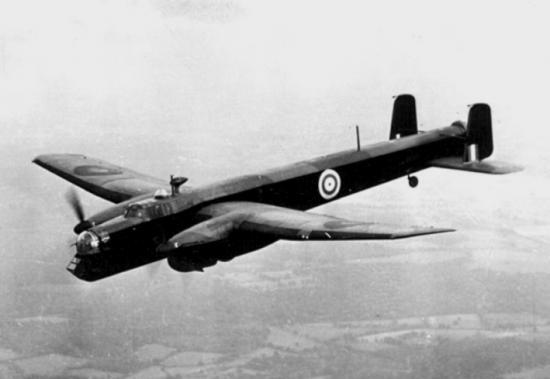
Armstrong Whitworth Whitley V, 1940
Photo : domaine public - Public domain (UK Government)






